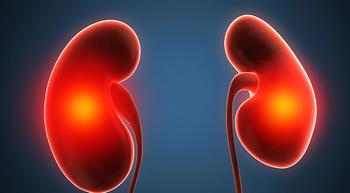
- Winter 2007
- Volume 6
- Issue 6
Blood Counts May Predict Survival
Blood counts predict leukemia survival and relapse.
Survival rates for children and young adults with acute lymphocytic leukemia (ALL) average 80 percent, and acute myeloid leukemia (AML) survival rates reach an average of only 40 percent. Now, doctors hope a simple blood test that measures absolute lymphocyte counts (ALC) will help predict survival after five years and the risk of relapse. This information could help doctors determine how aggressively to treat a patient.
According to a Cancer study published online in November, patients with low ALC—the measure of normal immune cells—at two weeks after the initial chemotherapy did not do as well as patients with high ALC. Study investigators examined 10 years of data from 171 newly diagnosed ALL and AML patients under age 21. The six-year survival rate for ALL patients with high lymphocyte counts was 87 percent, while a low count equated to 55 percent survival. In AML patients, five-year survival was 85 percent with a high count, and 28 percent with a low count.
While malignant white blood cells have long been known to influence outcome, Patrick Zweidler- McKay, MD, PhD, co-author of the study, says experts in the field first couldn’t believe normal lymphocytes could have this particular predictive ability. “I agree with the people who say it’s too easy, that it’s been right in front of our noses. But, on the other hand, I can’t ignore the fact that it’s there,” says Dr. Zweidler-McKay, an assistant professor at the Children’s Cancer Hospital at M.D. Anderson Cancer Center in Houston.
And the predictability doesn’t just apply to childhood leukemia. Dr. Zweidler-McKay says other studies have demonstrated the technique’s success in T-cell and follicular lymphomas and Ewing’s sarcoma. “This story is just building and building,” he says. “Every population they’ve looked at, there has been a correlation.
Now the important question is how to use the test and what to do if a patient’s counts are low. “I’d like to really start making decisions based upon it,” Dr. Zweidler-McKay says. “If you have a predictive ability that’s stronger than anything that’s out there ... it’s on [doctors] to do something about it.”
Articles in this issue
almost 16 years ago
Support Sitesalmost 16 years ago
Resourcesalmost 16 years ago
Caught in Medicare Limboalmost 16 years ago
My Healing Journalalmost 16 years ago
Where to Find Helpabout 18 years ago
Breaking News from ASH and SABCSabout 18 years ago
Message from the Editorabout 18 years ago
Warning Signsabout 18 years ago
A Dose Of Informationabout 18 years ago
Art & Life



